Timber wonderland
NTU’s newest building, Gaia, embodies NTU’s commitment to sustainability.
Text: Derek Rodriguez
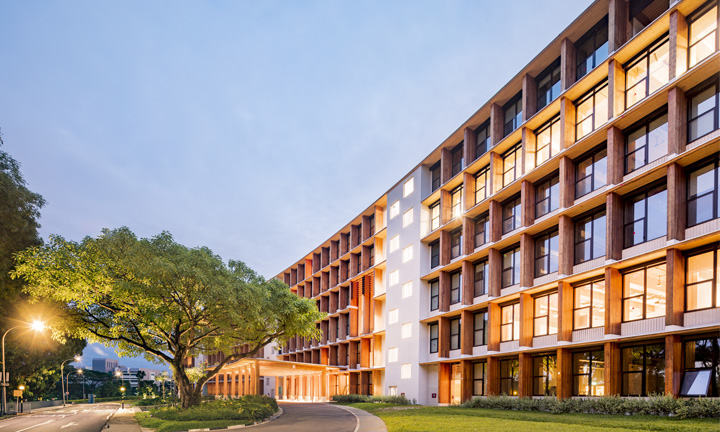
NTU is a beacon of sustainability and continues to set the bar in green goals and achievements.
Embodying this is NTU’s latest statement, Gaia, which combines form with function. With 43,500 sqm in floor space, it is the largest wooden building in Asia. It’s also the second building in NTU built using mass-engineered timber after The Wave, NTU’s state-of-the-art sports complex.
Located near Yunnan Garden, The Hive and the Chinese Heritage Centre, it stands on the site of the former Innovation Centre. The same red bricks that adorned the Innovation Centre’s façade have been reused and now welcome visitors to Gaia through the walls in its lobby.
While it’s the home of Nanyang Business School, its learning spaces are open for all faculties to use, just as in NTU’s learning hubs – The Hive and The Arc.
Every part of Gaia is designed and fitted to be ecofriendly. Devices like LED lights, high-efficiency aircon chillers and heat-deflecting glass help it to be more energy efficient. On its roof, 800 solar panels generate enough energy to power 169 three-room homes in Singapore for a year. These technologies contribute to Gaia being certified as the eighth zero-energy building in NTU, reinforcing NTU’s status as the greenest campus in Singapore.
The International Sustainable Campus Network has also awarded NTU with the Whole Systems Approach Award in recognition of NTU’s approach to sustainable infrastructure.
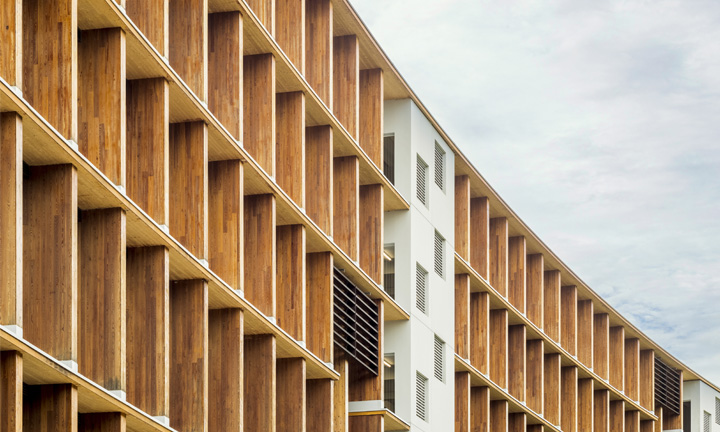
Raw beauty
The lack of paint and cladding on Gaia's concrete floors, bricks walls and wooden beams isn't just an aesthetic choice. Minimising the use of these finishings means that the energy and resources that would have been consumed in producing and installing them were saved.
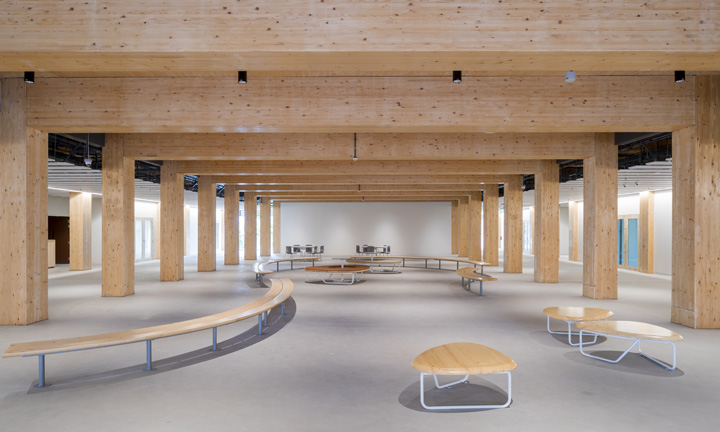
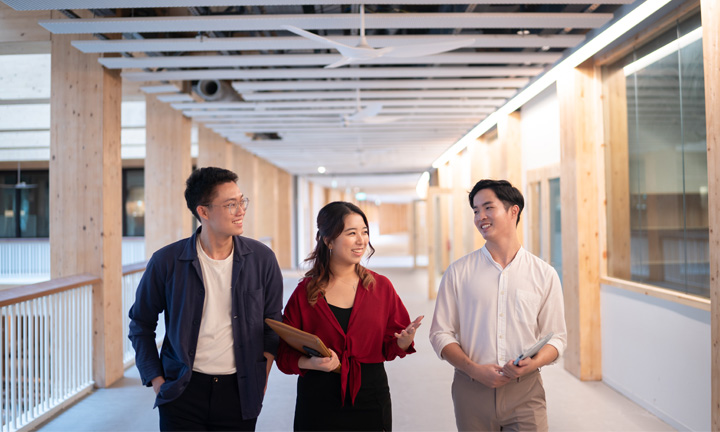
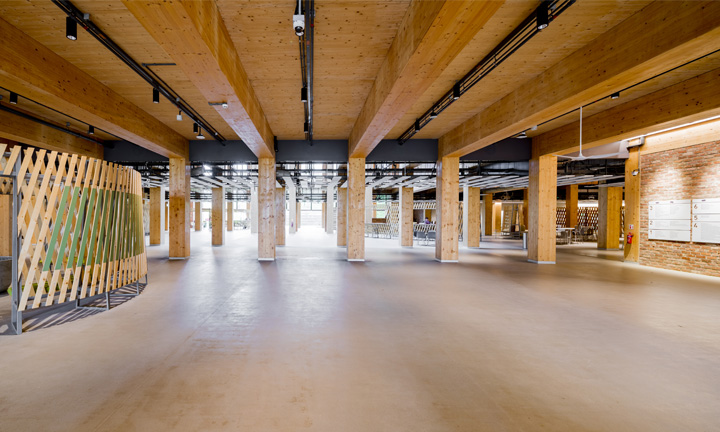
Naturally cool
On hot days, the timber used in Gaia acts as an insulator, trapping less heat than concrete would. Pockets of greenery with air wells, and extensive open areas and terraces ventilate the building effectively, keeping it cool naturally.
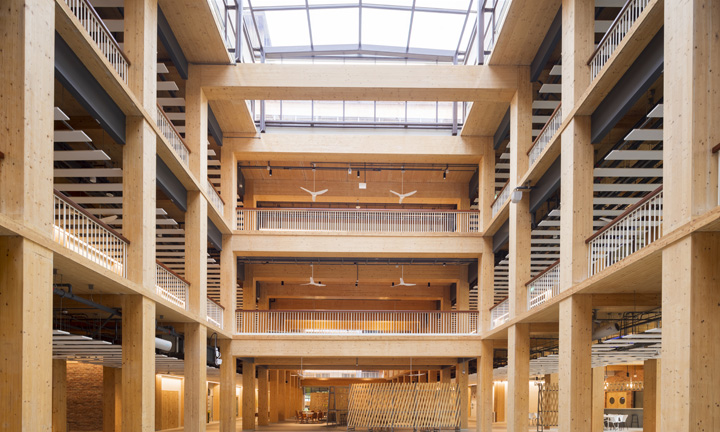
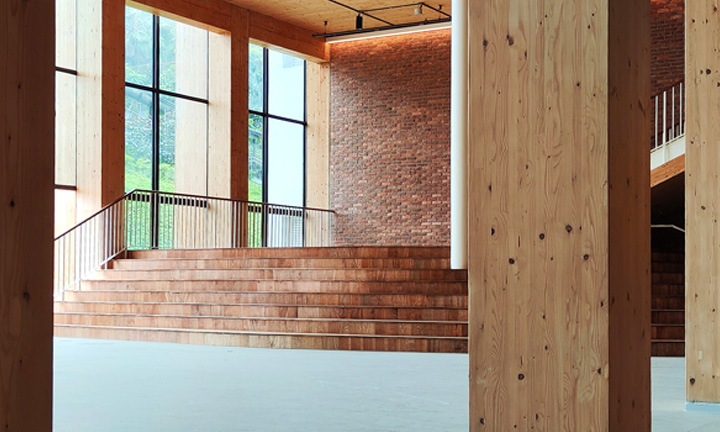
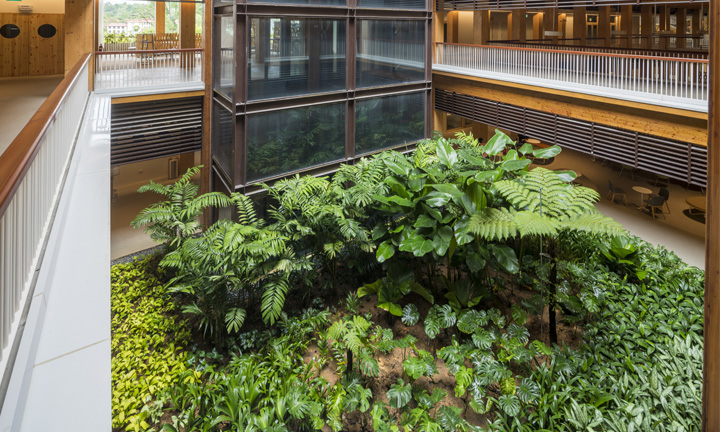
Wooden sanctuary
CNN describes walking into Gaia as “like entering a forest”. And that’s not far from the truth. The timber used in Gaia’s construction was harvested from renewable forests in Austria, Sweden and Finland, fabricated off site, and brought to NTU for Lego-style assembly. Besides producing less dust, debris and noise pollution, this building method is more efficient than traditional approaches, and shaved 35 per cent off the construction time.
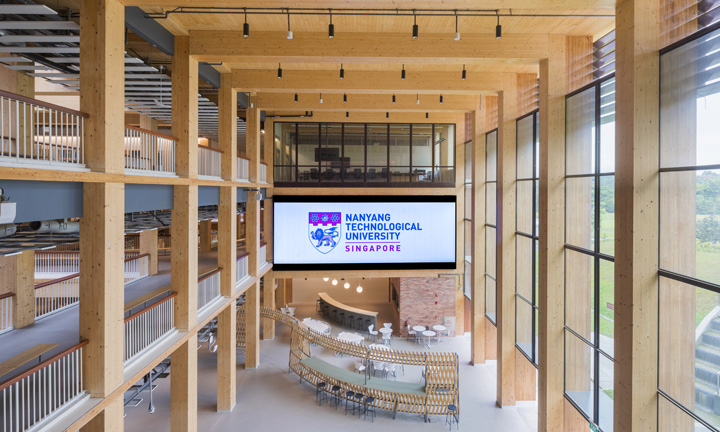
Next-generation classrooms
In the 190-seat auditorium – the largest indoor learning space in Gaia – the walls have ears. No matter where you’re seated, wireless microphones on the ceiling pick up and amplify your voice when you’re speaking, with cameras automatically tracking your position and beaming it to screens in the room.
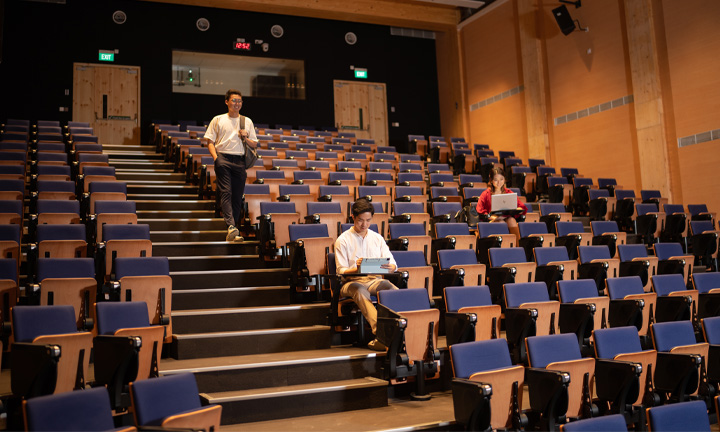
The smart system can identify chatter too, so whispered gossip isn’t broadcast to everyone. Other learning spaces in Gaia, including 12 lecture theatres, 13 seminar rooms and more than 70 small study rooms, are equipped with technology to enable interactive lesson approaches including the flipped classroom and team-based learning.
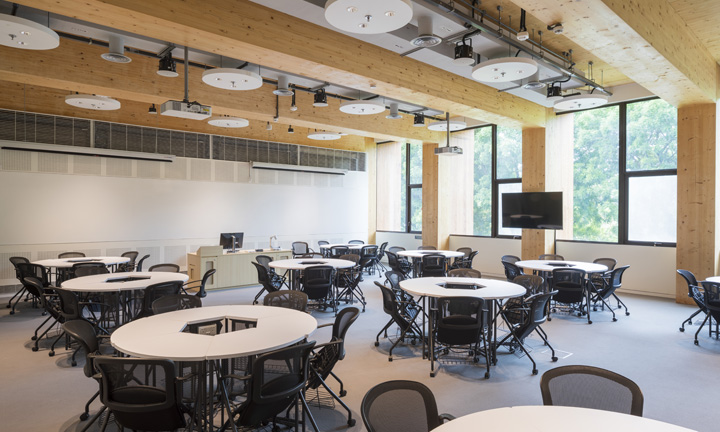
Open vistas
Toyo Ito, the celebrated Japanese architect behind Gaia’s design, is known for incorporating nature in his designs and you can see this influence here. Besides the timber construction, the building contains areas that feature seamless transitions between the indoors and outdoors. Study terraces and balconies with green-filled views make it easy for visitors to connect with nature.
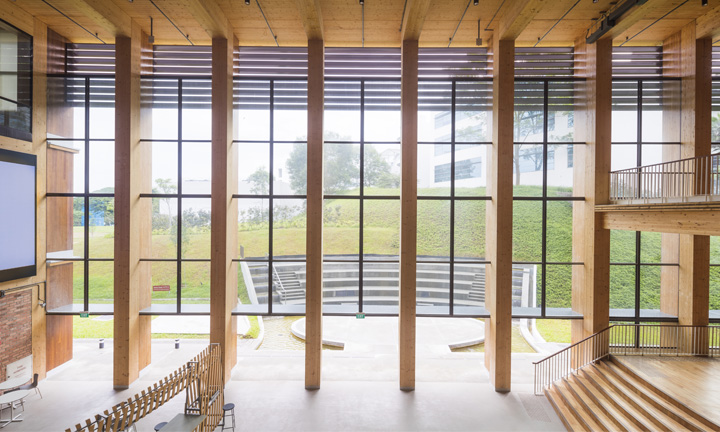
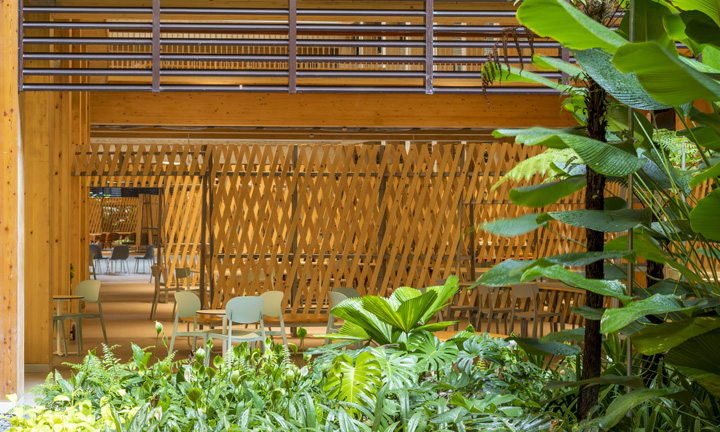
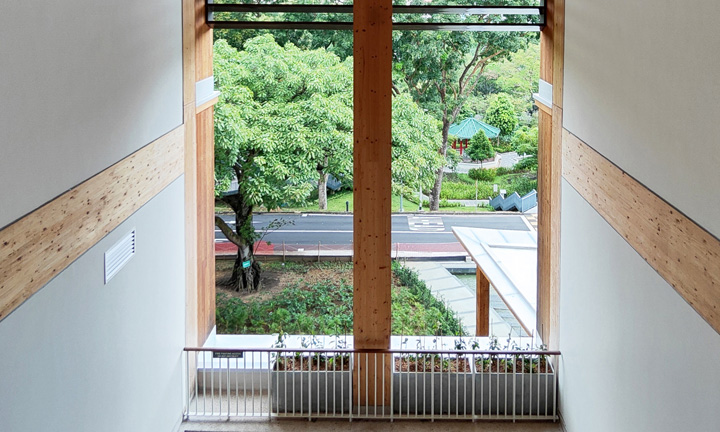
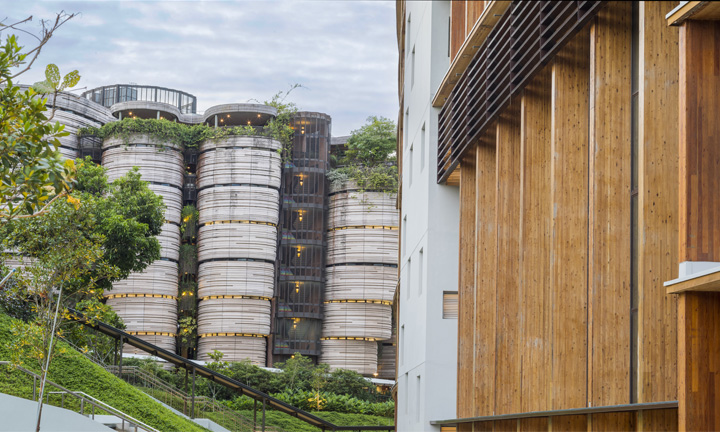
Watch a tour of Gaia led by a business student.
This article first appeared in issue 3 of U, the NTU alumni magazine.







